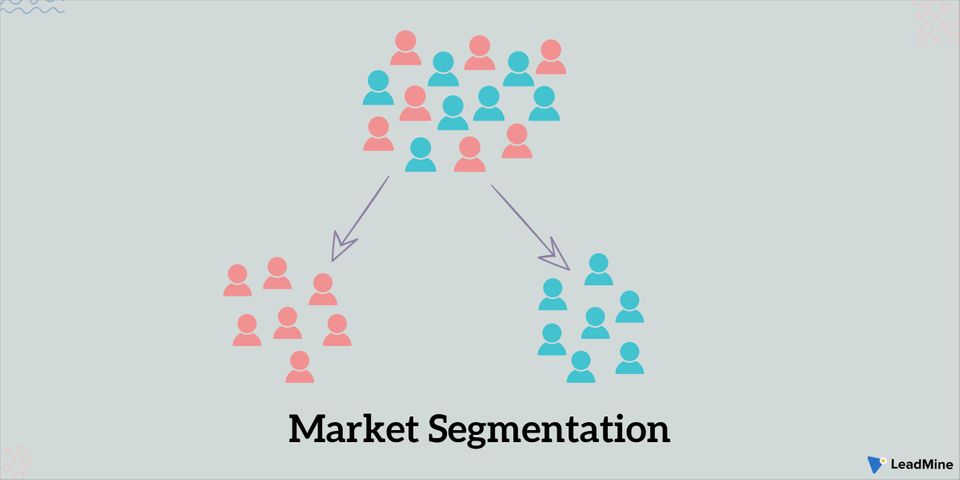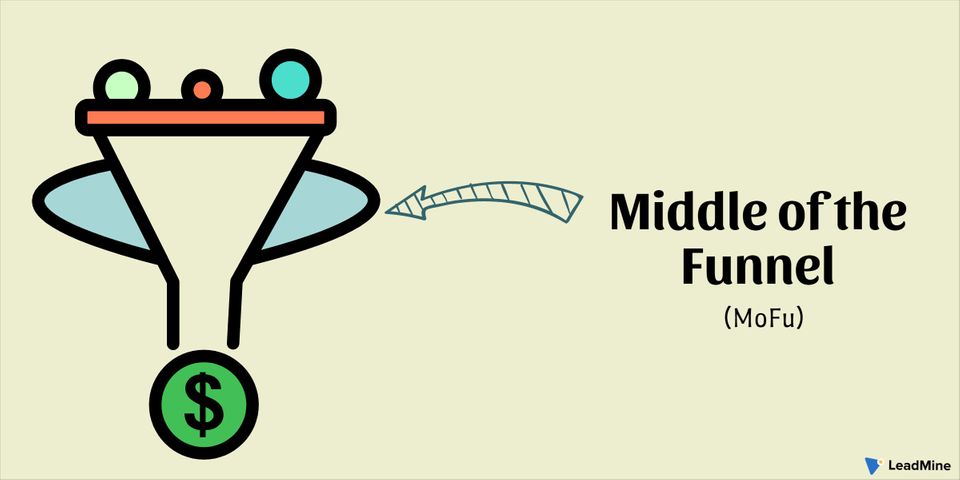Market segmentation is becoming an increasingly important component of a successful marketing plan, and it can make all the difference for businesses operating in highly competitive markets. When you're up against a slew of online rivals, efficient communication is the most effective way to set yourself apart. Market segmentation allows you to pinpoint precisely what messaging would entice your consumers to buy something.
Here how it’s done:
- What is Market segmentation?
- Types of Market segmentation
- Why Market Segmentation is Important?
- Purpose of Market Segmentation
- Summary
What is Market Segmentation? 🤔
The process of segmenting mass markets into groups with common needs and wants is known as market segmentation. Market segmentation is based on the idea that in order to gain a competitive advantage and superior efficiency, businesses should define industry demand segments, target specific segments of demand, and create specific "marketing blends" for each targeted market segment. From the standpoint of economics, segmentation is based on the premise that market heterogeneity enables demand to be disaggregated into segments with distinct demand functions.
In marketing, market segmentation is the method of separating a large consumer or business market, typically made up of current and prospective customers, into smaller groups based on common characteristics. Sellers of business-to-business (B2B) products may divide the market into different types of companies or countries. B2C sellers will segment the market into demographic, lifestyle, and behavioural segments, as well as any other meaningful segment.
Different market segments, according to market segmentation, require different marketing programmes, such as different offers, costs, promotions, delivery, or a combination of marketing variables. Market segmentation is used to not only define the most lucrative markets but also to build profiles of key segments in order to better understand their desires and reasons for purchasing. A market is segmented, one or more segments are targeted, and products and services are positioned to cater to the target market or markets.
Types of Market Segmentation 🧐
When it comes to improving the customer experience for your customers, pay attention to them. Market segmentation is divided into four categories: Demographic, Geographic, Behavioural, and Psychographic.
- Demographic Segmentation
When you divide your customers into groups based on demographic details like age, income, gender, education level, single or married, family size, ethnicity, job title, religion, and more, you're doing demographic market segmentation. It is the most popular since it is the simplest and most efficient method of dividing customers. - Geographic Segmentation
Geographic segmentation is the process of dividing customers into groups based on their location. If you're a global retailer, this can be done by continent or region. You may also divide them into regions, states, cities, and even communities or areas within cities. - Behavioural Segmentation
Behavioural segmentation is more in-depth than demographic segmentation when it comes to consumers' shopping preferences. It's also one of the most commonly used consumer profile models in marketing campaigns. This form of market segmentation is based on patterns of behaviour, such as customer loyalty or level of interaction. This is only applicable to consumer experiences with a business or brand. - Psychographic Segmentation
Psychographic segmentation is a form of customer segmentation that focuses on internal or qualitative characteristics. Psychographic characteristics, such as demographic segmentation, aren't apparent just by looking at the client. Psychographics, on the other hand, necessitates a more thorough examination.
Why Market Segmentation is Important? 😖
Now that you've learned about the four main types of marketing segmentation, you're probably thinking about what the biggest advantages of using them are.
The significance of this approach extends well beyond segmenting your target market into distinct groups.
To begin with, such unified customer segments would result in high customer retention. Customers who are captured at the start of an ideally tailored consumer journey would have a positive brand experience and are more likely to remain loyal to your brand. They would find it difficult to say no to you if every message and product you share with them resonates in any way.
Market segmentation will help you not only find new ways to reach out to your existing customers, but also find new segments and potential customers that you haven't yet entered. Analysing your customers in detail will allow you to discover previously unidentified needs or issues that your brand can address.
You'll be more effective in your efforts if you know how to talk to your customers correctly, which means you'll spend less money. That's what there is to it.
Gone are the days when your team will spin its wheels trying to come up with a catchy phrase. You'll still get it right if you segment your customers correctly.
Purpose of Market Segmentation 😇
Market segmentation is a useful tool for any business. Targeting particular high-potential markets makes business sense and improves profits. What is the reason for this?

To begin with, not all customers are equal in terms of importance to your business. Assume you're a non-profit organization. Not all contribute in the same way. They'll be the people who give small sums of money every now and then. Others will donate larger amounts on a regular basis, motivated by a personal connection to your cause. Understanding the latter section makes sense from a market standpoint. As a result, you'll be able to better cater to these individuals and effectively target them in your fundraising and marketing efforts.
The second point is that each customer is unique and has different requirements. This is critical to understand for a variety of business practices, including product creation, marketing, and customer support. You can cut through the clutter and have a better experience for your customers by knowing who you're targeting and tailoring your approach to their needs.
Summary
Any decision made by your customers is evaluated to see if the outcome is what they want or need. Market segmentation enables you to identify these needs and market to them directly, avoiding the waste of messaging. Knowing how to effectively communicate a message will help the company expand at an exponential rate.
So share your thoughts about the market segmentation with us at LeadMine.





